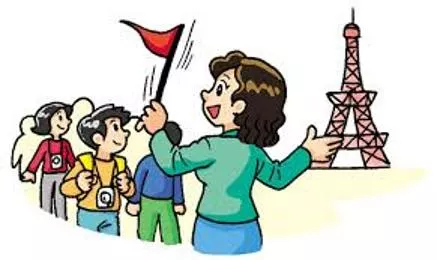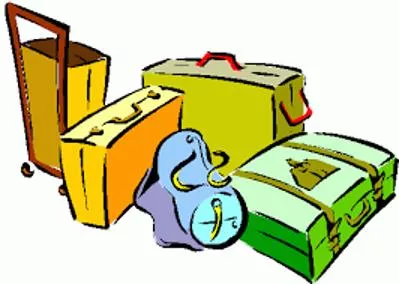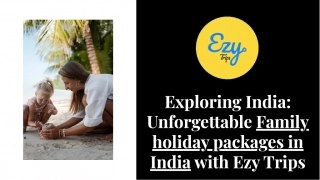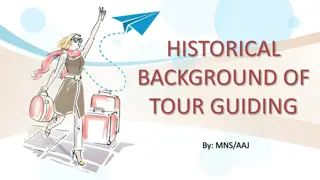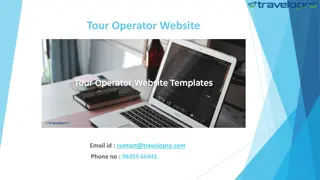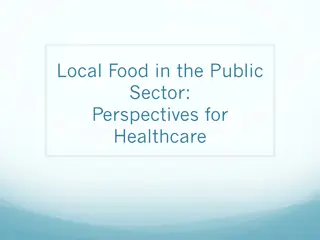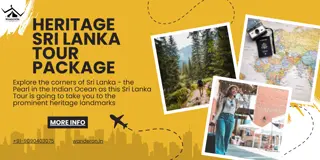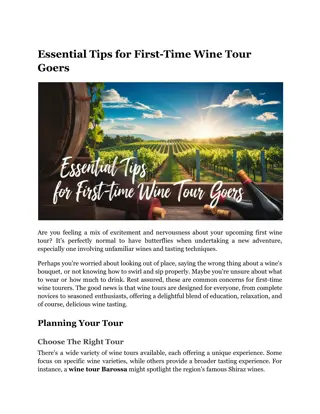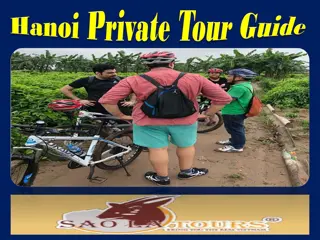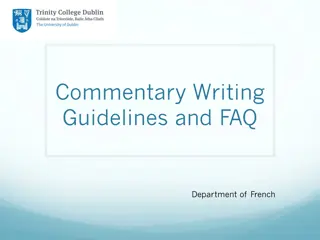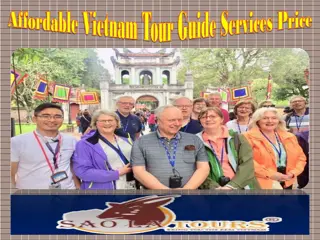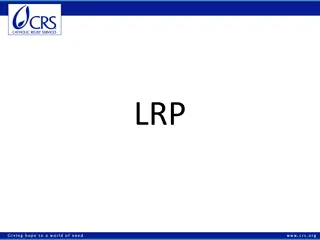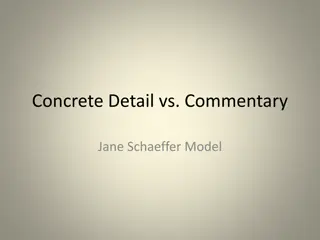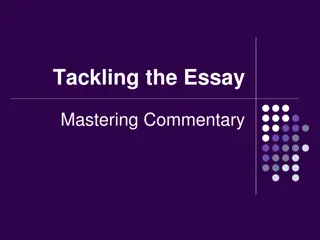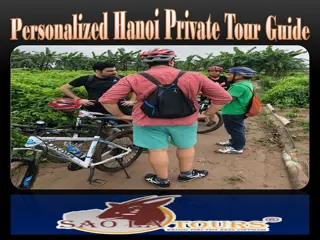Guiding Commentary on The Way: Tour Guide Tips and Local Food Insights
In this comprehensive guide, learn tour guide commentary tips covering attractions, landmarks, road conditions, and more. Discover how to indicate positions to tourists and estimate travel times effectively. Explore the vibrant street food culture in Indonesia, from food vendors to local processed foods like krupuk and tahu.
Download Presentation

Please find below an Image/Link to download the presentation.
The content on the website is provided AS IS for your information and personal use only. It may not be sold, licensed, or shared on other websites without obtaining consent from the author. Download presentation by click this link. If you encounter any issues during the download, it is possible that the publisher has removed the file from their server.
E N D
Presentation Transcript
Guiding Commentary on The Way
Tour guide commentary: Attraction at the side of the roads The landmark The condition of the road The traffic jam Traffic accidents Blocked road Previewing the attraction or tourism object to visit
Indicating position: In front of you is... On your right/left you will see... Up ahead... As we turn the corner here, you will see... In the distance... If you look up you will notice... Off to the north... Look to the east... To your west... In a few minutes we'll be passing... We are now coming up to... As you will see... You may have noticed... Take a good look at... If you look over to the right now you can see Now we are approaching.. We are now directing to south We are heading west
Giving information about the time needed: It will take.. minutes to go to We need .. Minute to go to
Giving Local Food/ Local food service Information
Food Vendors A wide range of street vendors (kaki lima) maybe found in Indonesia town, cities, selling fruitsm vegetablesm and prepared food. With the exception of women who sell tonics (jamu), PKL are ....... (1) men generally cater to lower income group. Some sell from carts which they ..... (2) the road side, while others balance ...... (3) at the end of shoulder poles (pikulan) stopping at suitable places to cook. They sell, for example, bakso, fried rice, bananas, tahu, tempe, etc. Paddling their wares Wheel along Cluster together Portable kerosene stoves Predominantly Slung at either end Five legs
Food Vendors Pedagang pikulan are hawkers mainly men who sell vegetables basket ...... (4) of a long pole. Other hawkers sell fruits, vegetables, eggs or spices from mats or basket set out at the side of the street. There are more likely to be women. Usually individual selling the same produce .... (5) along the same stretch of road. Paddling their wares Wheel along Cluster together Portable kerosene stoves Predominantly Slung at either end Five legs
Local Processed Food Commonly eaten processed food, such as shrimp paste, tempe, krupuk, and tahu are usually manufactured locally in small factories or by city-based home workers. Krupuk (a kind of cracker) is eaten on their own, as a snack or as an accompaniment to meals. They are made from fish flakes, crab flaws, mixed with rice or sago flour. This is rolled out to form thin wafers which are dried and then deep fried before being eaten
Local Processed Food Another important processed food in Indonesia cuisine is tahu, a major source of protein. It is made by first soaking soybeans in water for up to 6 hours until they become mushy. They are then mashed to semi-liquid pulp. The pulp is then cooked for several hours in a large vat and must be constantly stirred. While still boiling, it is poured through cheesecloth into another vat to screen out impurities. Vinegar is added causing the liquid to curdle, and the separated liquid is siphoned off
Task: Work in group Think about one kind of Indonesian traditional food The description of how to make it Present it in front of the class.
Task: 1. Make a tour map with some landmark showing the route of your tour from the hotel to some tourism objects in Bandung. 2. Write your guiding commentary on the way from the hotel to tourism objects based on the tour map you design 3. After completing commentary, each group swaps the written commentary to the other group. They help to proofread and to give a comment on it. 4. Group presentation. the written guiding



